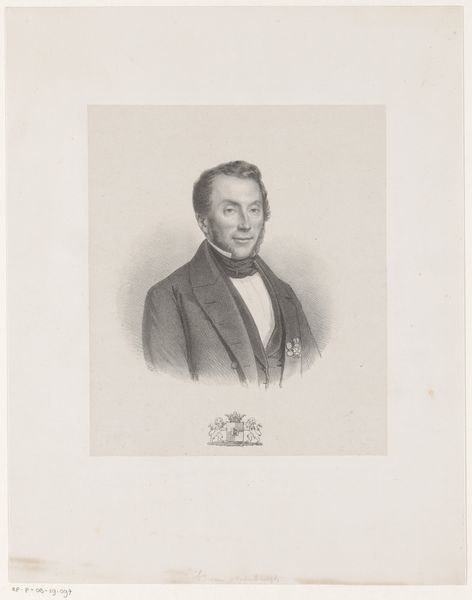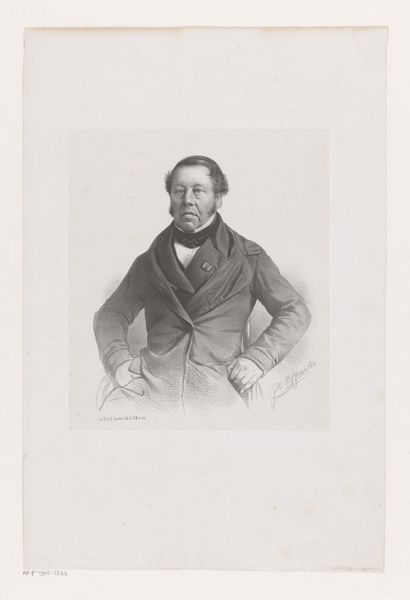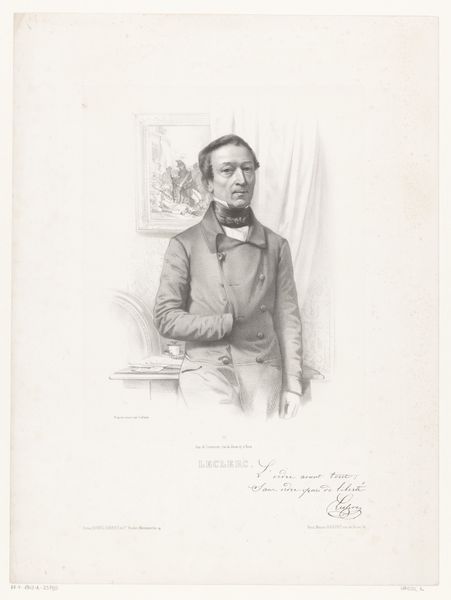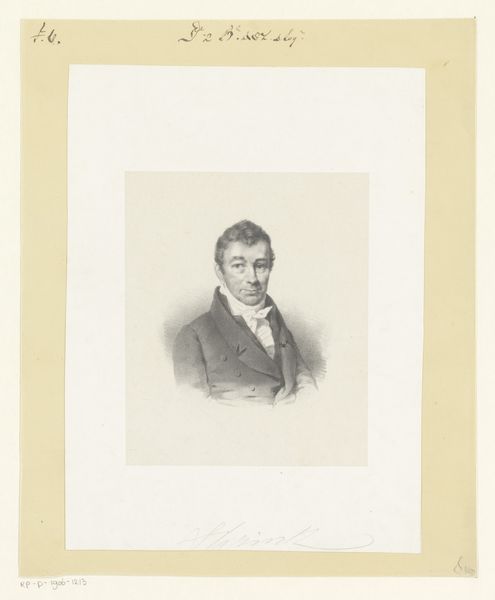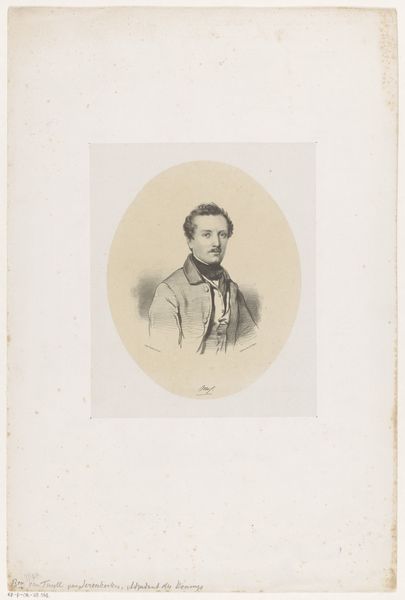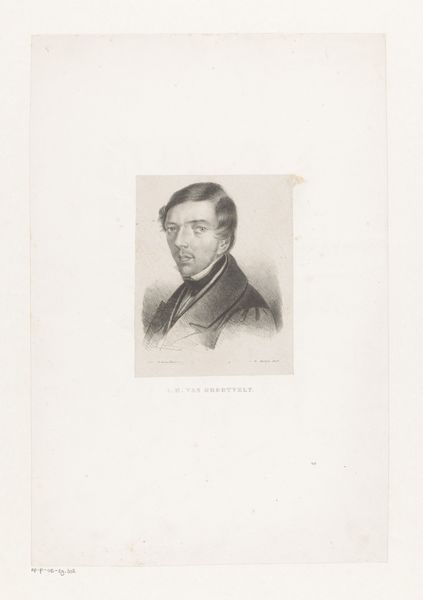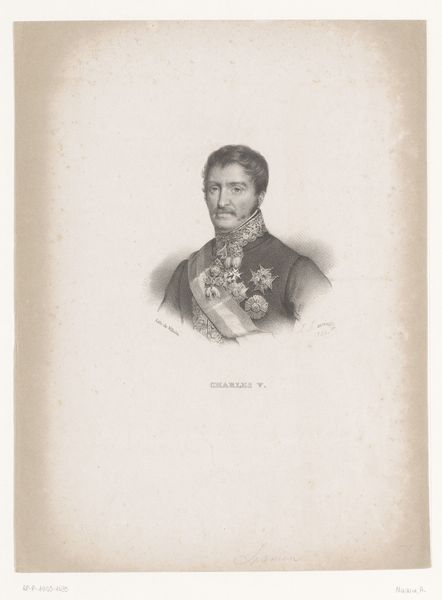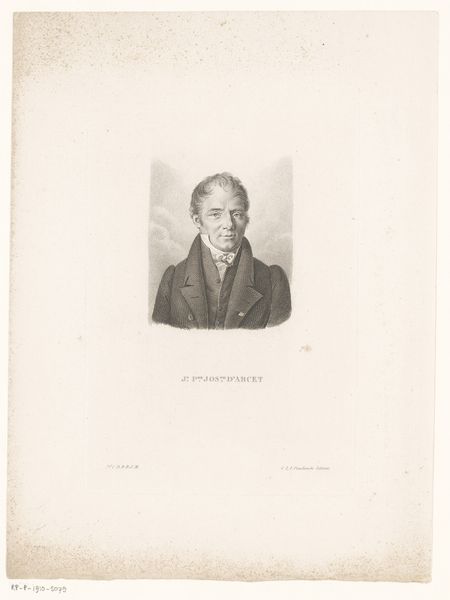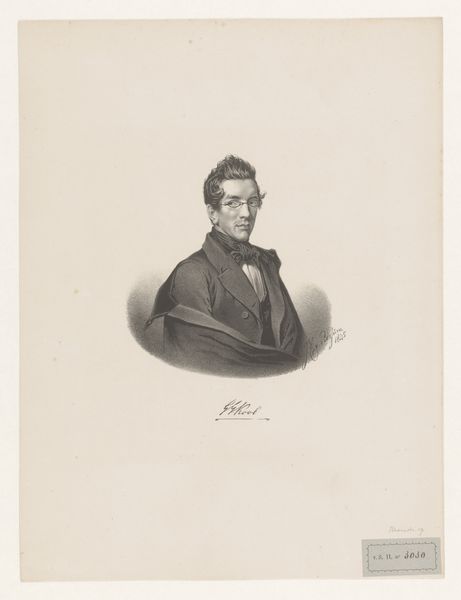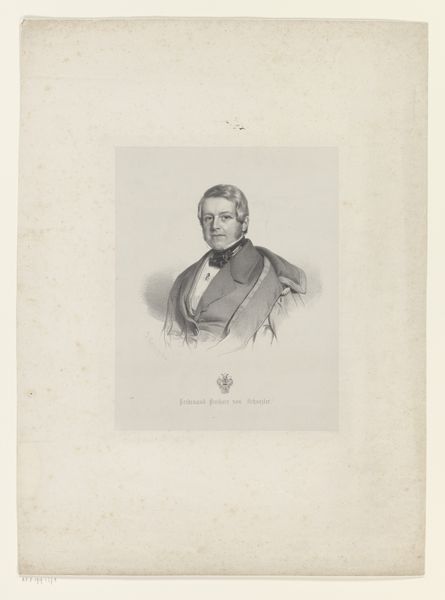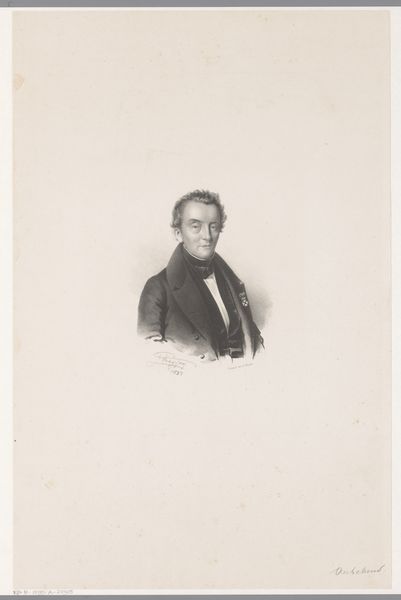
drawing, pencil
#
portrait
#
pencil drawn
#
drawing
#
pencil sketch
#
pencil drawing
#
pencil
#
pencil work
#
history-painting
#
academic-art
#
realism
Dimensions: height 477 mm, width 315 mm
Copyright: Rijks Museum: Open Domain
Curator: Here in gallery 222, we are face-to-face with "Portrait of an Unknown Man" attributed to Carel Christiaan Antony Last. The drawing, dating between 1818 and 1876, is rendered in pencil. What’s your immediate impression? Editor: Stark elegance, perhaps even a quiet melancholy. There’s a crispness to the drawing that I find compelling, although the anonymous sitter invokes questions around identity and representation. It feels like a study of a man intentionally made devoid of distinctive signifiers, even if he belonged to a particular social stratum. Curator: That’s an interesting read. This portrait exists within a historical moment of emerging bourgeois power in Europe. The lack of identifiable markers, could speak less to anonymity, and more to the sitter reflecting broader aspirations of his time. Editor: Right, his gaze is piercing, yet contained. His carefully arranged cravat and severe waistcoat suggests an attention to the cultivation of the self. But, even the Realism adopted in portraying his features serves to reflect, perhaps unintentionally, something about the lack of real individual power and self-expression during his lifetime. Who was he trying to be, or to seem to be? Curator: Last, an artist operating firmly within academic art circles, may have sought to reflect a level of aspirational civic identity in the individual. It's possible it was even commissioned, where sitter and artist were striving to visually project power for the patron through this work. Editor: I can see that. Yet, looking at his eyes and posture, I wonder if such representations ultimately flattened authentic lived experiences to meet prevailing societal pressures and norms. The image invites speculation about social conditioning in that era. What’s his untold narrative within a historical frame? Curator: True, this type of formal presentation always begs that deeper contextual reading. A work of art can transcend the limits the artist worked within. Editor: Agreed. Considering contemporary conversations surrounding social representation and power, reflecting on this artwork from that perspective feels essential. Curator: Precisely, these echoes are what resonate so profoundly even now. Editor: Exactly!
Comments
No comments
Be the first to comment and join the conversation on the ultimate creative platform.
